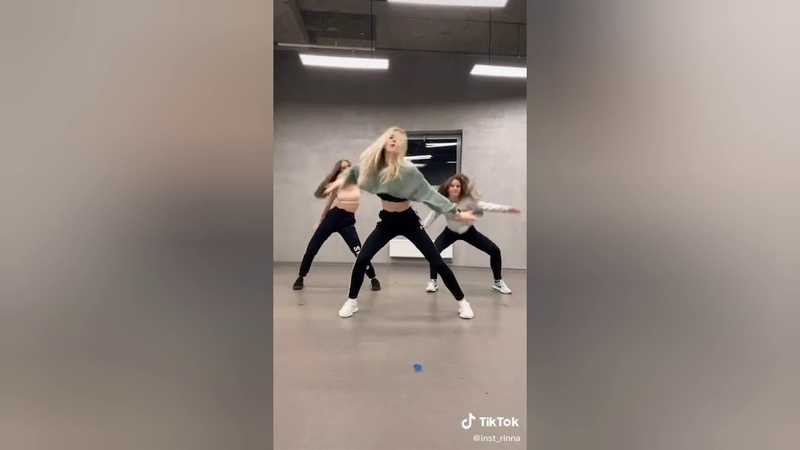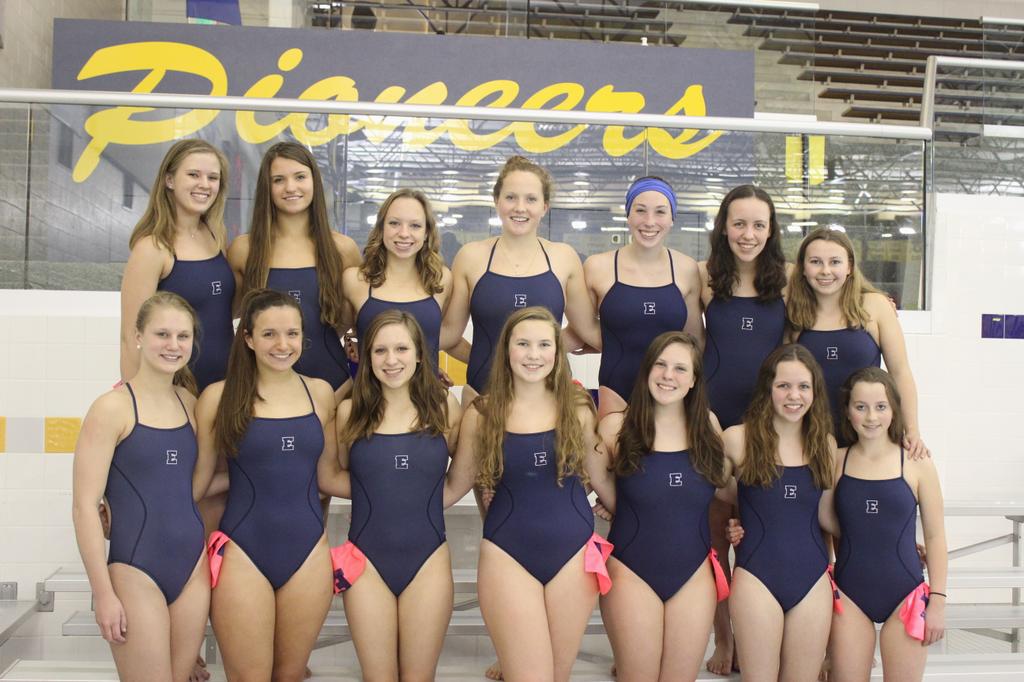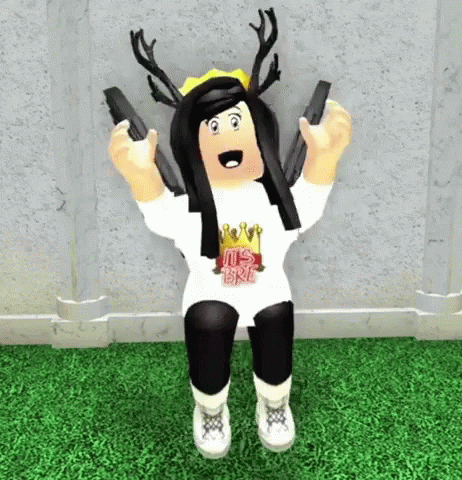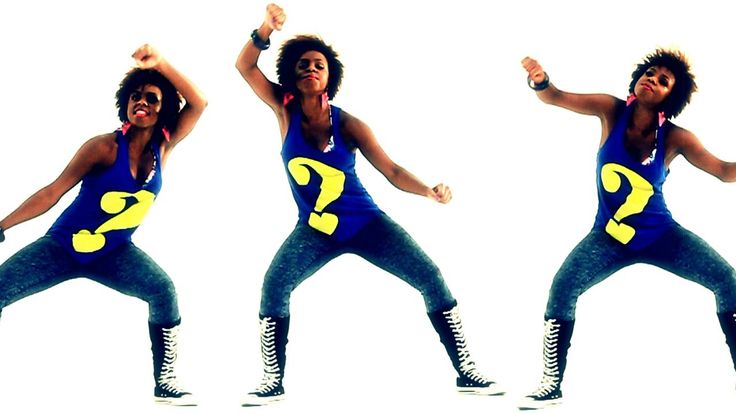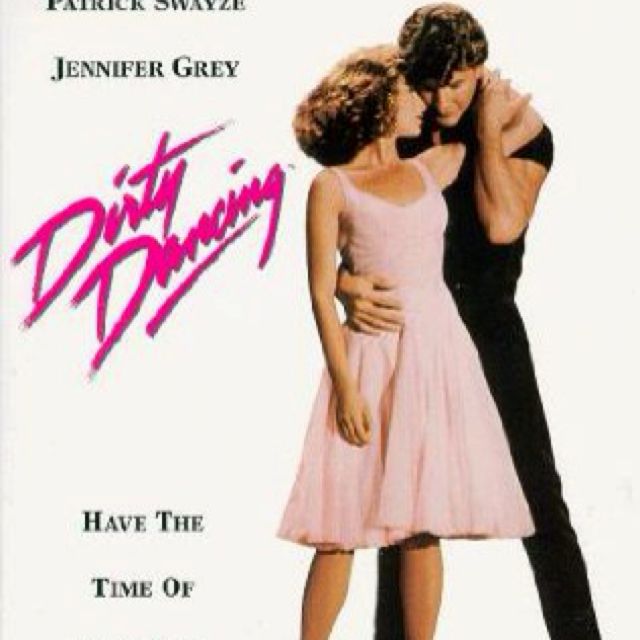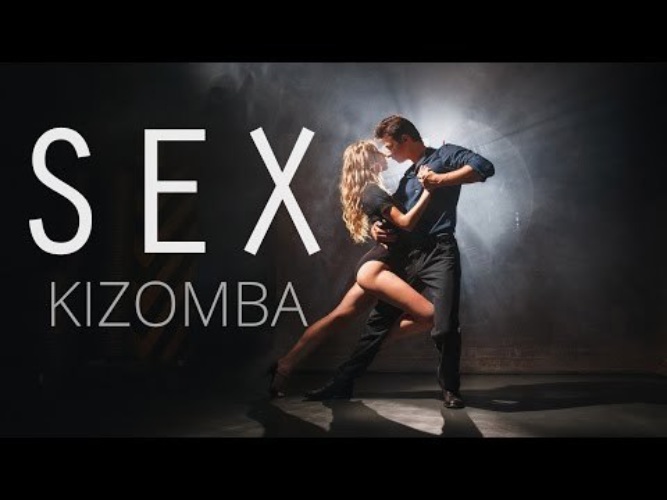How to swing out dance
Learn Basic Swing Steps
Swing is a lively, non-progressive partner dance that can be danced to a wide variety of music, from blues to rock & roll. Non-progressive means it's mostly performed in one spot, so it's very convenient on a crowded dance floor.
- Basic steps
- Instructions & Diagrams
- Video
- Recommended Video Lessons »
Quick intro
Swing is one of the most versatile partner dances you can learn - very social and beginner friendly. Easily adaptable to a wide range of tempos, it involves movements with lots of swinging, spinning and rhythmic, creative footwork.
There are many different styles of swing, the term actually refers to a group of dances that developed from the swing style of jazz music in the first half of the last century. There's Lindy Hop, Boogie-Woogie, Jitterbug, Shag, Charleston, West Coast and East Coast Swing, just to name a few. Each of these dances has its own distinct flavor.
One of the most popular and very suitable for beginners is the East Coast Swing. It's a bit more social and relaxed than other versions. It's also a formal ballroom dance and the easiest to learn. Perfect for beginners, which is why we'll focus on this version here. It will create a good foundation and is the base for other more complex versions.
East Coast Swing can be danced to a variety of music styles. If it's written in 4/4 time and has a tempo between 135-170 beats per minute, you can swing it.
To dance swing you'll need a partner, a sense of humor, and a bit of endurance. It may seem a bit intimidating at first, especially if you're watching those who really mastered it. But as with all things, you have to start with the basics. And the basics are easy. Once you learn the fundamentals, you'll be swinging in no time. Always remember, wear comfortable shoes. Now let's go swinging.
Basic steps (East Coast Swing)
Beginners usually start with East Coast Swing, because it is the easiest of all swing styles.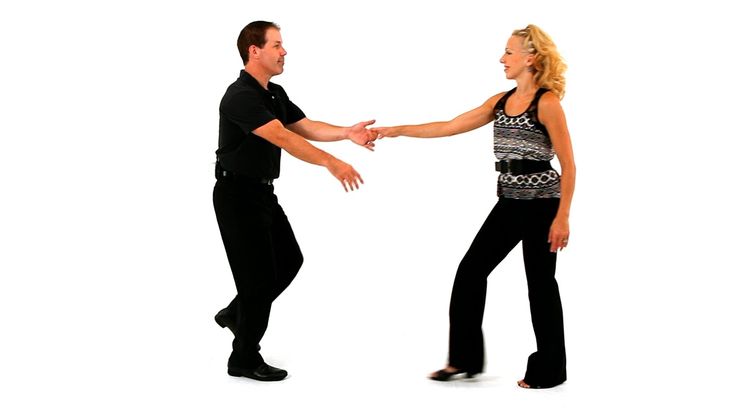 Here we will show you the basic 6 count step for East Coast Swing.
Here we will show you the basic 6 count step for East Coast Swing.
East Coast Swing has a basic count of 1&2, 3&4, 5,6. It's known as a triple step swing. The basic pattern is triple step, triple step, and a rock step.
When you're starting out you can replace the triple step with a single step. In that case the pattern would be step, step, rock step or rock step, step, step, depending on how you start counting. The overall progression is, of course, the same.
The triple step is really not that difficult to master, it is performed in a chasse-like manner - side step, together, side step.
Instructions & Diagrams:
Basic Steps For Men: The man starts with his left foot.
- 1&2: Triple step (chasse) to the left (left-right-left)
- 3&4: Triple step to the right (right-left-right)
- 5: Step backward with your left foot
- 6: Weight shifts to your right foot
Basic Steps For Women:
The woman starts with her right foot.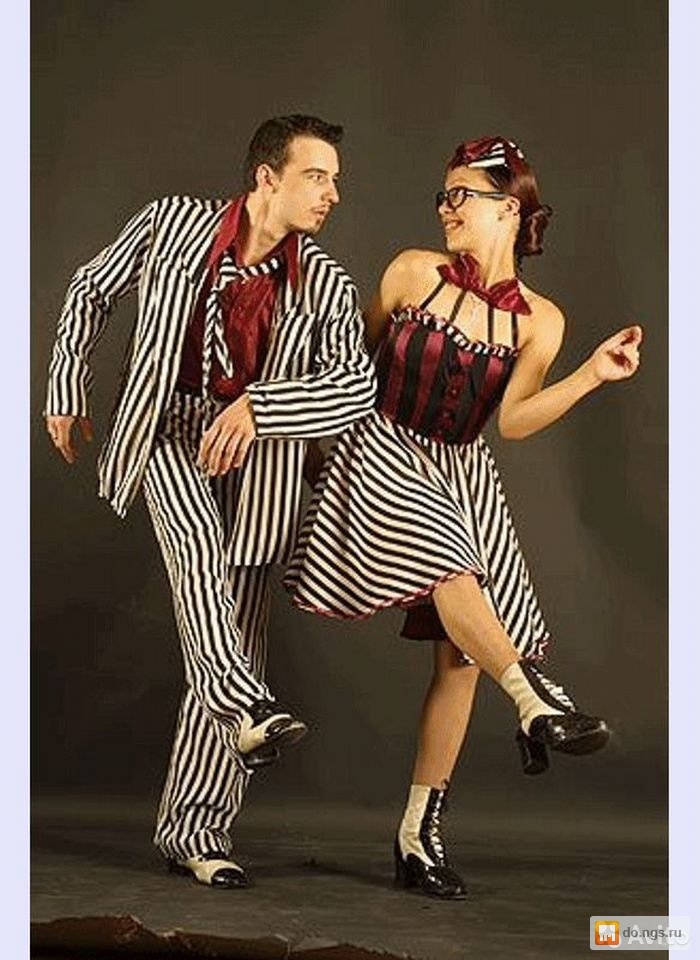
- 1&2: Triple step (chasse) to the right (right-left-right)
- 3&4: Triple step to the left (left-right-left)
- 5: Step backward with your right foot
- 6: Weight shifts to your left foot
Remember, keep the steps small.
Video
Leon and Kim will show you the basic steps, how to turn, and more:
more videos »
Now let's have some more fun, let's do some kicking:
Where to go next?
When you're ready for more fun, check out our recommended video lessons.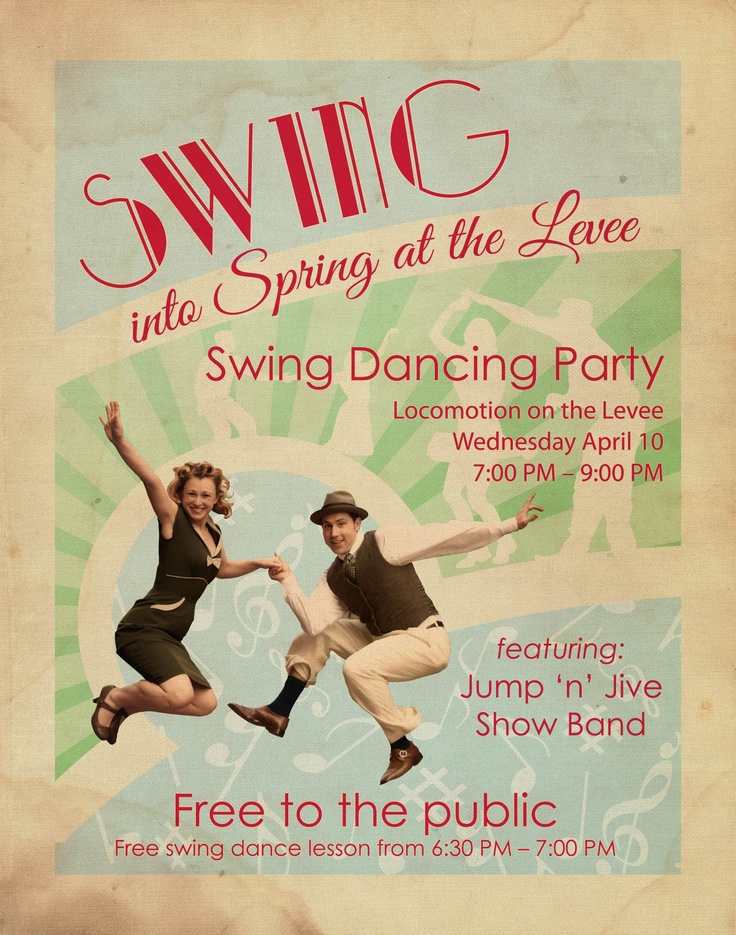 Video is a great way to learn dancing.
Video is a great way to learn dancing.
Dance Class | Groove Theory Dallas
chicago-steppin-tuesdays
swing-out-thursdays
1/1
CLICK HERE TO JOIN
CLICK HERE TO JOIN
MEET ADRIAN
CARSON
- Started dance professionally at age of 12
- Opening dancer for Far East television syndicated show Seeing Stars with Joe Quirino for 2 years Manila, Philippines
- Danced Professionally 30+ years
- Full Scholarship to Julliard School of Performing Arts (Graduated Masters of Dance)
- Trained In: Contemporary, Jazz, Tap, Lyrical, Modern, Ballet & Groovin- All styles of dance
- Owner Talent Unlimited Performing Arts Studio, The Colony, Tx.
- Merit Award Scholarship recipient for Alvin Ailey Jr. Dance Company
- Appeared in over 50 music videos
- Dancer for multiple recording artists
Accredited Judge- Domestic & International Competitions
Dance Companies:
Alvin Ailey Dance Company, New York
San Antonio Jazz Dance Company, San Antonio, Tx
Urban Jazz Dance Company, Los Angeles, Ca
Salvage Jazz Dance Company, Los Angeles, Ca
Choreographed multiple events & Professional Dancers
Visiting Choreographer: San Antonio Spurs Dancers
Visiting Choreographer: Dallas Desperados Dance Cheerleaders
Visiting Choreographer: Dallas Black Dance Company
(Instructor)Fiorello H.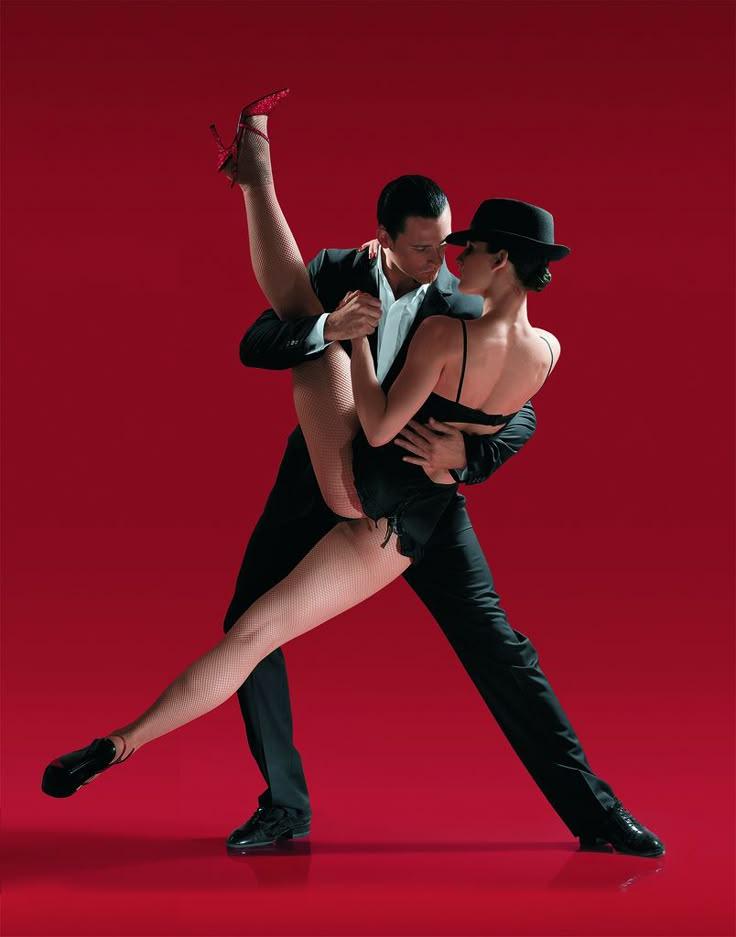 LaGuardia HS, NYC
LaGuardia HS, NYC
(Instructor)Talent Unlimited HS, NYC
(Instructor)Booker T. Washington HS, Dallas,TX
Groove Theory Dallas TV
Play Video
WHAT OUR STUDENTS SAY
TANNER FEAST
For me, Groove Theory Dallas is not just a Swing Out class — GTD is a family, and I am proud to be a part of it. They mix a ton of positive energy into a lot of support and encouragement along with just the right amount of tough love to make you the best dancer you can be — That has been my experience at GTD. Thank you for helping me to realize my potential to make this dance my own.
LATRESTA GINYARD
Groove Theory Dallas is an absolute experience choreographed by the best of instructors. The atmosphere is one of fun, friendship, and family where everyone is welcome. Aside from teaching me a solid foundation in my footwork, GTD taught me how I move on the floor relates to how I move in life.
CHARLOTTE
TURNER
"I've always had the love of dance...from high school to college and even into my adult life! It was no different when I came to Groove Theory Dallas in late 2016 where in fact, my passion for the 'art' grew even more! Under the direction of Adrian Carson, I've learned so much technique and style. We have so much fun learning while at the same time creating and nurturing a true family of friends. I wouldn't have it any other way! Thank you Adrian for truly caring."
SAVE NOW WITH THE GROOVE CARD
BUY NOW!
waltz Many couples want to learn how to waltz in a way that does not step on each other's feet, does not hurt other dancers, and generally feels dignified and comfortable. Moreover, dancing classes will have a positive effect on your physical form: your posture improves, your figure becomes slender and fit. Waltz has long been a very popular dance. Often, he even acted as a model for creating other ballroom dances and various types of waltz.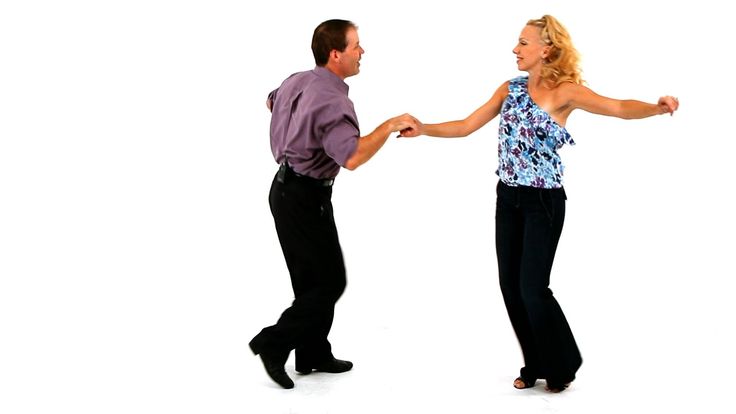
Germany and Austria are considered to be the birthplace of the waltz. Despite this, the roots of the waltz go back to the Czech dance "mathenik", which was performed at the holidays, as well as to the French "volt" ("lavolta") and the Austrian "lendler". By the way, fast waltz forms are called Viennese waltz.
In order to learn how to waltz, by and large, you need to know only two basic movements: the right turn and the so-called "track". Since the "path" is not particularly difficult to learn, we will begin our explanations with a turn. A full 360-degree turn consists of 2 parts and is performed for 2 measures, given that the musical time signature of a waltz (one measure) is 3/4. The rhythm of the waltz is a continuous count: one-two-three-one-two-three... Before learning to dance in pairs, it is best to practice the turn alone.
Learning to turn
First half. Stand facing the movement so that the legs are in the third position (the heel of the right foot is attached to the middle of the left foot, and the socks are turned to the sides - the so-called eversion position). By the way, in a waltz, the legs should always be in such an eversion position. Now we proceed directly to the turn.
Stand facing the movement so that the legs are in the third position (the heel of the right foot is attached to the middle of the left foot, and the socks are turned to the sides - the so-called eversion position). By the way, in a waltz, the legs should always be in such an eversion position. Now we proceed directly to the turn.
Take a step forward with your right foot, starting to turn to the right (this is "one"), after that - step with your left, increasing the turn and standing with your back along the line of dance (this is "two"), on the count of "three" the right leg is pulled up to the left and rises to the original third position. This is the first half of a full turn - as a result, you should turn exactly 180 degrees. When you work out these mechanical movements, pay attention to the fact that your steps are smooth, slow - dancing.
To do this, at the second step, rise on your toes, and by the end of the third step, lower yourself onto your foot, as if crouching a little.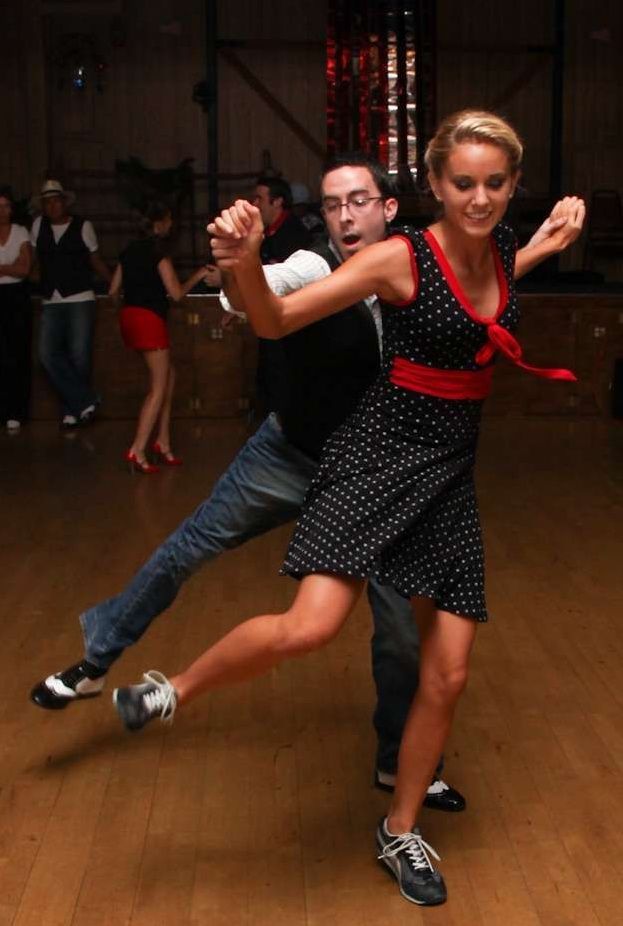 The effect of sliding on the parquet should be created.
The effect of sliding on the parquet should be created.
Second half. At the end of the first half of the turn, you should be standing with your back on the line of dance and your feet in third position, as we said earlier. Take a step to the side with your left foot (this is “one”), while keeping the entire weight of the body on the left foot, now bring the right foot with the inside of the toe behind the heel of the left foot (this is “two”), now turn on the half-toes of both legs to the right so so that you find yourself in the very initial position - facing along the line of dance (this is "three"). This rotation must also be exactly 180 degrees. Practice the steps.
To perform a full dance turn, simply connect the first and second halves of the turn. Remember that all movements are light, smooth, on the toes. You must slide.
Turning alone is much easier than in pairs. And this is true: you must feel your partner, follow not only your own, but also his actions.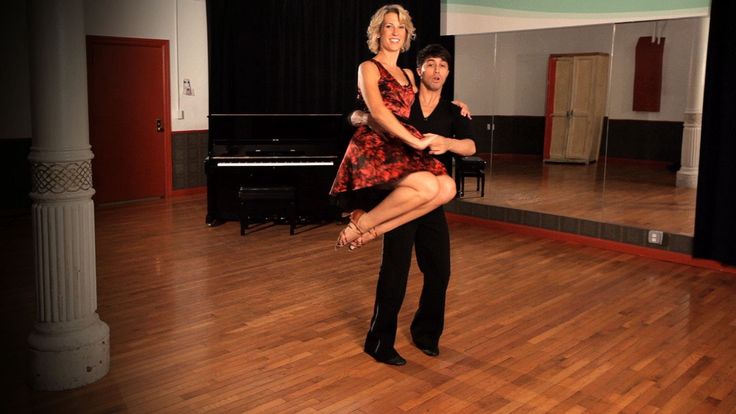 Moreover, the uncertainty and excitement from one person is very quickly transferred to another, so it's so easy to get lost, to forget the necessary movements.
Moreover, the uncertainty and excitement from one person is very quickly transferred to another, so it's so easy to get lost, to forget the necessary movements.
For a paired full turn You must stand together: the girl is in the line of dance and the man is behind. At the same time, the girl begins to move forward from the right foot, while the man starts moving from the left and to the side. That is, it happens that at first the girl dances the first half of the turn, and the man dances the second, and then the opposite is true. That is, at the same time, each partner performs different halves of a full turn. You should not immediately move to a fast pace - it is important to understand the principle of movements, to work out not only the technique, but also the dance smoothness, lightness and beauty. When dancing a waltz, you must always move forward along the line of dance, respectively, in each measure (one-two-three) you need to make a turn of 180 degrees. The fact that we divided the full turn (360 degrees) into two parts is purely arbitrary, for the ease of learning movements, therefore, in the dance itself, this division should by no means be visible - the turn is made as a whole.
The fact that we divided the full turn (360 degrees) into two parts is purely arbitrary, for the ease of learning movements, therefore, in the dance itself, this division should by no means be visible - the turn is made as a whole.
Waltz "track"
Waltz, as a rule, is not danced only in one direction - it is boring, and it makes the dance completely inexpressive, monotonous. That's what the dance floor is for.
Stand together facing the line of dance (next to each other) and march to the waltz music, taking one step per count. It's not that hard if you listen carefully to the rhythm of the music and follow it. Now try to walk in the same way, only on half-toes (the knees should be tucked up, but not tense). Don't take too big steps, but don't get too small either. Practice for each count of "three" to lower from half toes to the entire foot. The "path" should also create the effect of easy sliding and not get out of the dance.
One "track" occupies one measure: one-two-three. All steps must be equal in size. A man, as a rule, makes a track, stepping back a little and always starts with his left foot, and a girl, on the contrary, moves forward and starts with her right foot.
At the beginning, it is best to compose the dance as follows: two full turns for four measures and four measures of the "track". When the movements are honed and rehearsed, it will be possible to switch to the "track" less often and circle more often in the dance. Some combine, for example, 12 bars of rotation and four bars of "track".
By the way, about turning to the left: everything is done in the same way as when turning to the right, only, accordingly, you need to start on the other foot and in the other direction. Do not rush to immediately go to the left turn, so as not to get even more confused - first, rehearse the right turns well.
Dance lesson
Learn to waltz! Believe me, this is a very beautiful and spectacular dance.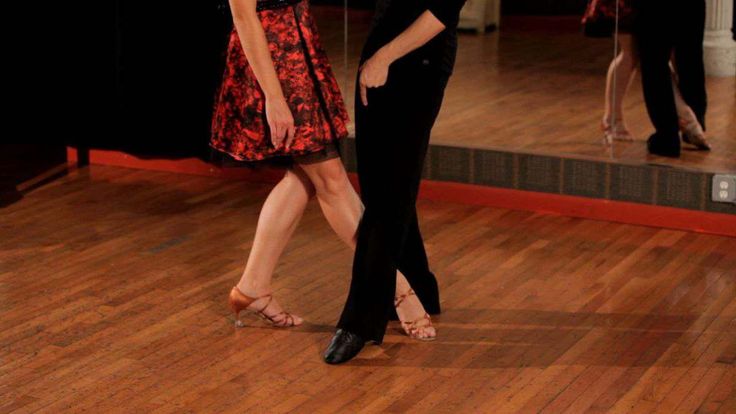 Many, by the way, are afraid that during rotations they will feel dizzy - nothing like that. This is just a matter of habit, but there is also a little secret: do not look around, but focus on your partner or look at the line of dance. Good luck to you and good luck!
Many, by the way, are afraid that during rotations they will feel dizzy - nothing like that. This is just a matter of habit, but there is also a little secret: do not look around, but focus on your partner or look at the line of dance. Good luck to you and good luck!
Culture
The red color of the epoch: the Art of the Land of the Soviets is shown in Kirov (0+)
The new exhibition project of the Vyatka Art Museum consists of more than 150 works.
Society
The main Snow Maiden of the country will arrive in Kirov
Governor Alexander Sokolov announced this at a meeting of the regional government. What is the program of the visit of the granddaughter of the main wizard of the country?
Sports
Preparations for the traditional Vyatka Rally competition have begun in Kirov
Citizens will be able to see military vehicles on Theater Square.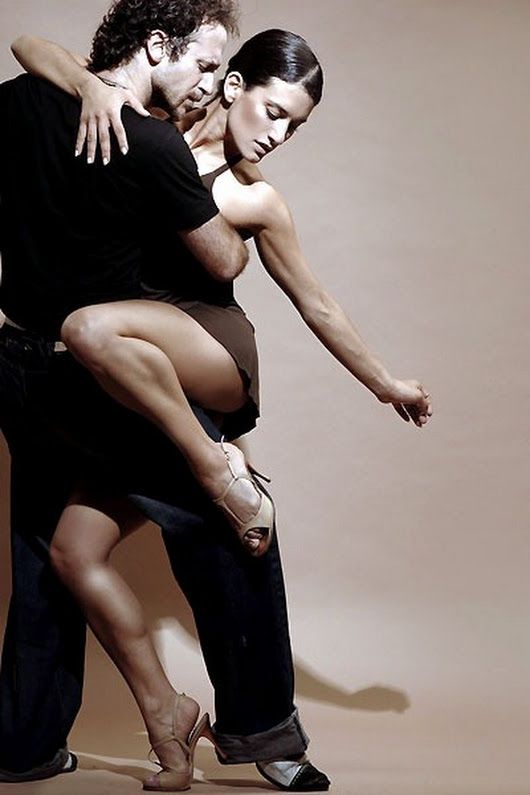
Society
Traveling on Lastochka with comfort: travel to Nizhny Novgorod will get bonus points
High-speed Lastochkas of increased comfort will run on the route Nizhny Novgorod - Kirov. What will change?
Authorities
The State Duma named the new laws coming into force
What to expect from the first month of winter?
Culture | Poster | In their free time
Kirov will host an inclusive laboratory for young directors "Special Theatre"
Directors from Moscow, St. Petersburg and Kirov will create sketch productions and performances in a few days.
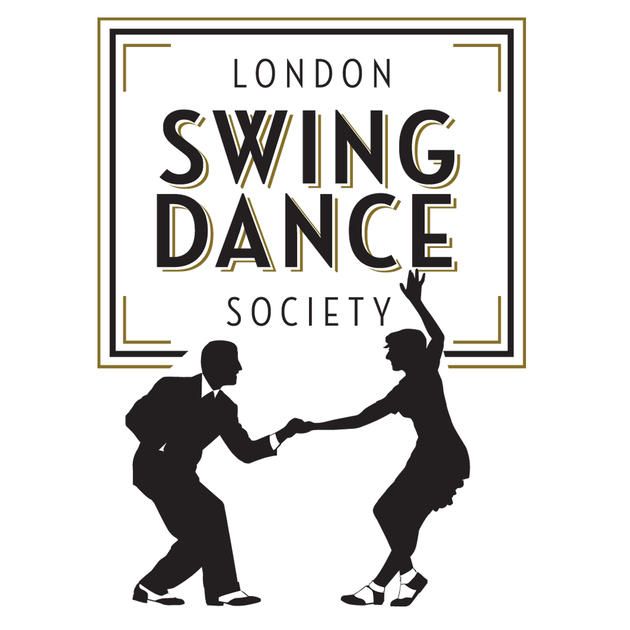 ikirov.ru, 2001 - 2022 Age category 16+.
ikirov.ru, 2001 - 2022 Age category 16+. Founder: Information City LLC. Editor-in-Chief: Vetoshkin Andrey Alekseevich.
Editorial e-mail: [email protected], Editorial phone: (8332)52-90-31
Mass media registration certificate EL No. FS 77 - 34616 dated December 02, 2008
issued by the Federal Service for Supervision of Communications and Mass Media communications.
Legally significant messages should be sent to the address: Kirov, st. Uritskogo d. 24 office 2.
Anton Vdovichenko. How to dance (think) in the language of dance
This text is an introductory article to a manual with exercises developed by participants in the Irrational Body performance laboratory. The purpose of the laboratory was to create a dance work and its regular shows. But how else - except at shows - to open such a dance practice to people who do not dance themselves? Is it even possible?
In the introductory text, I will not give the exercises themselves - it is understood that they will be located further in the manual, but I will analyze their common features. Our exercises are needed in order to suspend mental and emotional reactions to each other and to this space, being in the same physical and kinesthetic space. They offer a way to spend time together and experience the co-presence of bodies without relying on the conclusions and assumptions that follow from the accumulated experience of the participants.
Our exercises are needed in order to suspend mental and emotional reactions to each other and to this space, being in the same physical and kinesthetic space. They offer a way to spend time together and experience the co-presence of bodies without relying on the conclusions and assumptions that follow from the accumulated experience of the participants.
What techniques help you avoid falling into the state of "I already know this person and their ways of communicating"? How do we get to the pre-linguistic mode of interaction that actually happens all the time, but so quickly that we don't notice it? How to show and maintain the ability to pre-linguistic interaction?
↓Photo: Kristina Rozhkova
***
One of the main exercises at our rehearsals was standing. Standing is a neutral position, immobility, from which any possible dance and movement scenario can potentially unfold.
The practice of standing has long been with me as a teacher. I can't remember who I got it from, but I don't want to deny the story and I realize that the most famous development of standing is Steve Paxton's Little Dance. And although I never practiced the "Little Dance" in its purest form, I believe that it penetrated me through the air and through the words of the teachers with whom I studied.
And although I never practiced the "Little Dance" in its purest form, I believe that it penetrated me through the air and through the words of the teachers with whom I studied.
While standing, it becomes clear how rich our "inner life" is. We are not made for simple actions like standing. The question immediately arises: why stand? Immediately there are reasons not to continue. But one must continue, maintaining the center of neutrality, from which all thoughts or experiences in the body “float like clouds across the sky” (as thoughts are often said during meditation).
Neutrality shows another problem. How not to become too immobile? How not to lose the ability, or desire, to dance? Unlike habitual meditation, standing is communication. Or rather, the kinesthetic experience of space.
***
We need something more authentic for dance than psychological life. What can we constantly refer to and keep specific in dance? These are balance, tone, attention, physiological processes, the body's memory of the movement patterns of all creatures that make up our evolutionary chain (as Neil Shubin writes in The Inner Fish).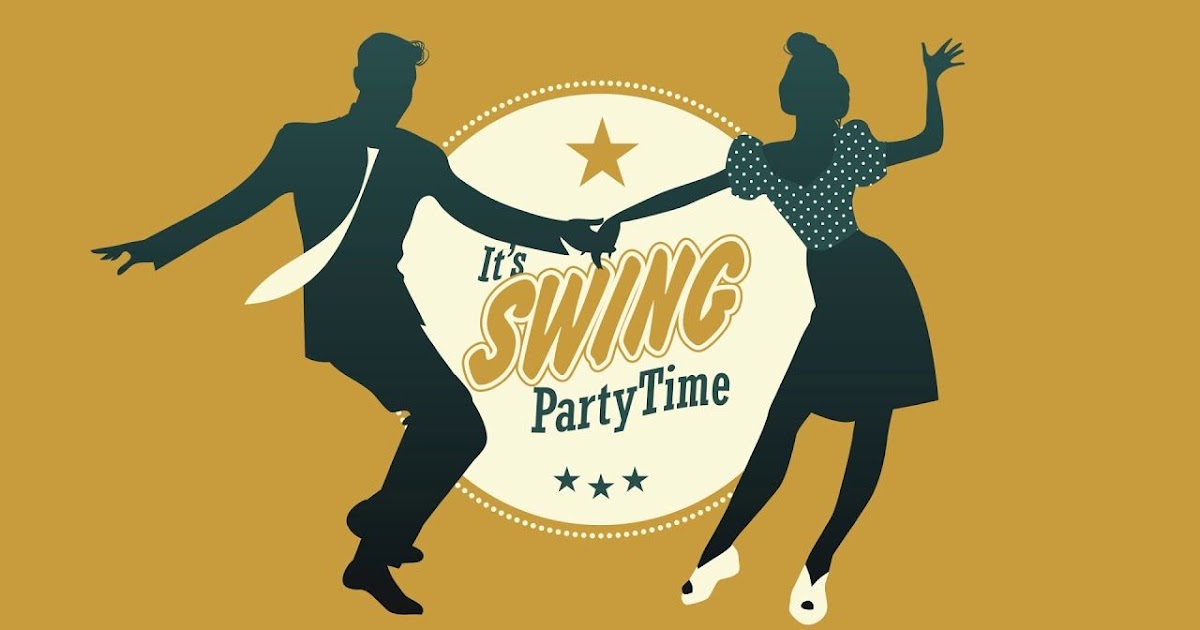
The exercises do not suggest turning off, but rather reformatting all the senses for spatial perception. That is, to suspend emotional and mental reactions, but at the same time move - or sculpt - in response to the information received, remaining in the dance. Look at any conversation or relationship through the prism of dance. Consciously increase the intensity of attention - but not deeper, but rather, expanding the coverage area, stretching a uniform network of attention to the maximum number of available objects. This stretching temporarily forms the body, and
the change of bodily forms, which is due to the appearance, movement and disappearance of other objects, and is a dance.
In other words, to dance, you need to place and keep your attention between your own physicality, your own location and all partners who are also moving. Holding here is not fixation, but hypersensitivity to time and space: where and for how long do I need to be?
***
At the beginning of this way of practicing the dance, you will find a loss of ability to act.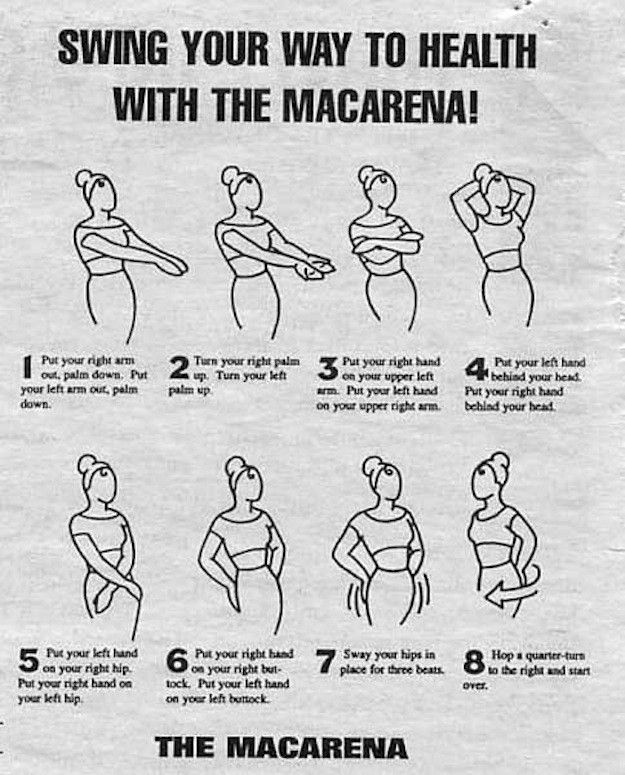 Everything will be more like listening. In the future, the space will begin to dance with all those present and choose for itself for whom it will now manifest itself more intensely, and for whom it will remain a landscape. But both the intensity and the state of the landscape are always suspended as a question, not asserted.
Everything will be more like listening. In the future, the space will begin to dance with all those present and choose for itself for whom it will now manifest itself more intensely, and for whom it will remain a landscape. But both the intensity and the state of the landscape are always suspended as a question, not asserted.
Dance makes it possible to stay in the world and communicate without the usual psychological reactions, if we do not pull everyday ways of interaction into it. If we believe that dance originated as a way to take a break from work, then it is anti-pragmatic. You can’t rest using the same connections and parts of the brain as during work. "A change of activity is the best rest." The question is how drastic this change is.
The dance is also connected with the sacred, with the ritual. That is, again, with the body - or even with the whole human essence as a whole - in a non-everyday situation.
In other words, since ancient times there has been a need to do something with the body that has no practical significance.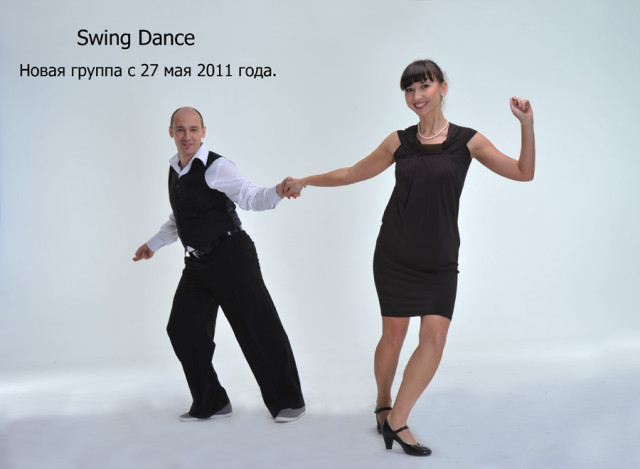 I associate this with the need for the fullness of life and with the need for something in life to be complete. Dance, as an art, provides an opportunity to take your life into your own hands - during its performance.
I associate this with the need for the fullness of life and with the need for something in life to be complete. Dance, as an art, provides an opportunity to take your life into your own hands - during its performance.
Photo: Alena Vnutskikh
***
If we nevertheless analyze mental or emotional reactions, we will notice that often the body turns out to be a dark (invisible) part of the human essence that influences decisions. As Merab Mamardashvili says, there is no need to look for a global tragedy in everything - a bad mood can be due to the fact that your stomach hurts.
↓Photo: Kristina Rozhkova
But what if we show physicality and look at emotion as movement? Consider the example of touch while working in pairs. When people touch each other, both parties receive so much information that if they mix their emotional relationship with the partner with the touch, they cannot hold their attention.
At the lesson, emotions seem to be neutralized by "disposition towards all those present.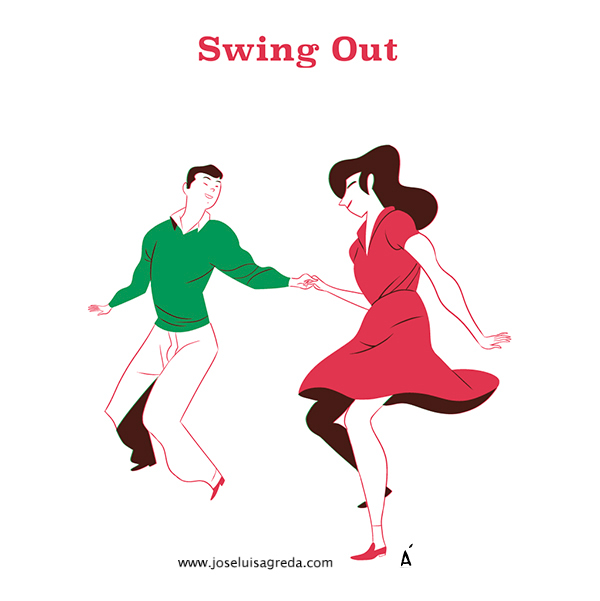 " But we know how immediately it becomes noticeable if there are emotional relationships between people (and not only if they are bad).
" But we know how immediately it becomes noticeable if there are emotional relationships between people (and not only if they are bad).
Anything that is not neutral when working with touch is bad. It breaks the connection with what is really happening. But you need such a neutral that allows any bright, expressive to appear. The neutral, which does not fetter or average, but shines through, grows from all bright manifestations and allows everything to develop precisely as a dance - as a spatial experience.
***
Man is a divided being. Thought and body unstick. We are able to convey information with words and sounds, but
how to make a thought physically lived — without interpretations, evaluations, cultural frameworks? Is it possible?
For example, in a song, unlike everyday speaking, there is no separation of thought and body. But thought is language, and dance is something, in my opinion, eluding naming and context.
In moments of danger, the physical living of thought works naturally.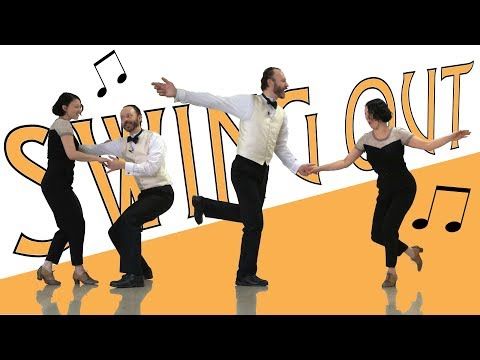 And if it doesn't work, then you die. But when there is danger, a pragmatically justified thought arises, and it is obvious.
And if it doesn't work, then you die. But when there is danger, a pragmatically justified thought arises, and it is obvious.
How can the dance be as concrete as at the moment of death, when the whole human essence becomes one, undivided, mental-physical?
Little dance - an opportunity to notice that any thought while standing is connected with balance. Standing is the background - an ideal that can never be reached. For the appearance and continuation of the dance, a background is needed, and against the background it becomes clear that any thought unfolds as a movement in the body-space.
While standing, thought develops according to those laws or through those images that I recognize as possible. This is a vicious circle between reflex and acquired. We need ways of thinking, backgrounds, coordinate systems that are suitable for dance. Standing is one of such backgrounds.
***
Sometimes it happens that there are no questions “how to dance?” and “why dance at all?”.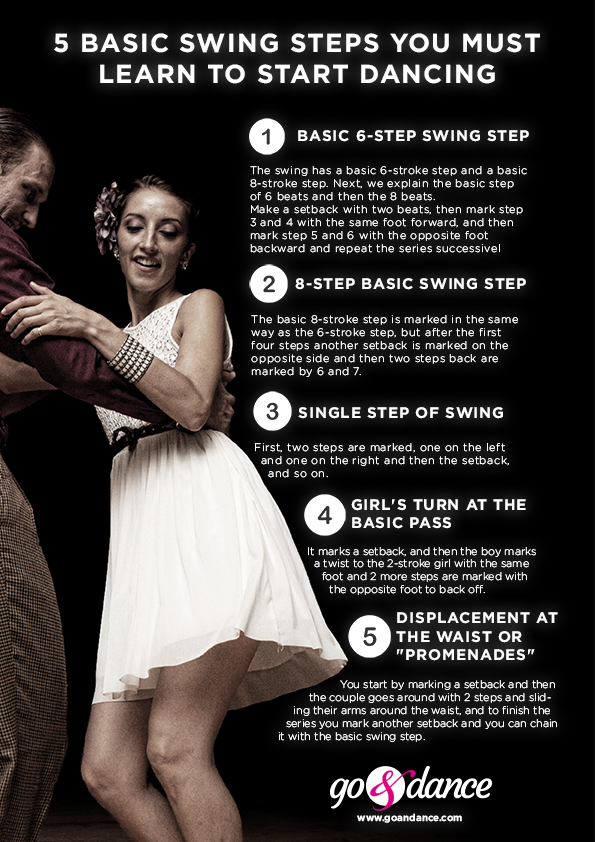 Then joy arises, because there is no universal permanent answer to these questions.
Then joy arises, because there is no universal permanent answer to these questions.
Photo: Kristina Rozhkova
Life has a place for dance. There are institutions associated with dance. But often, when I start dancing and if the dance eventually happens, I find that it belongs either to my teachers and people dancing next to me, or to my previous experience in which the understanding of the need to dance was revealed to me.
It seems to me that when creating dance works, artists often do not work directly with dance. This allows them to distract themselves from the annoying "how to dance?" and “why dance at all?”. Then dance finds the energy of persuasiveness in extraneous responses related to body culture or emotional life. But there is also a danger that in the future it will not be possible to advance precisely in the dance. Such works often do not want to be repeated, because they inspire dance once or twice, but no more. Dance is not embedded in them as a gene, and therefore dance cannot solve the tasks that are set in the work.


